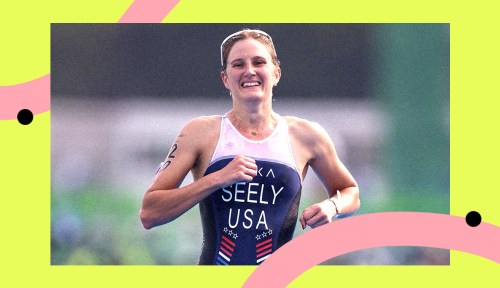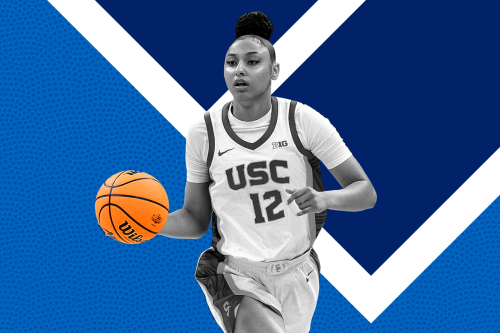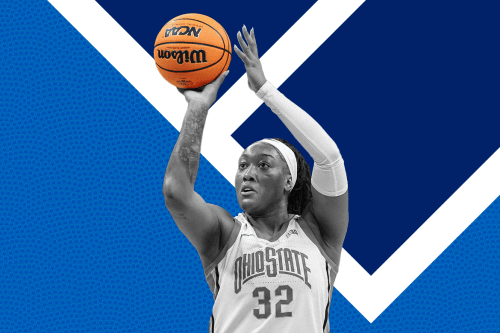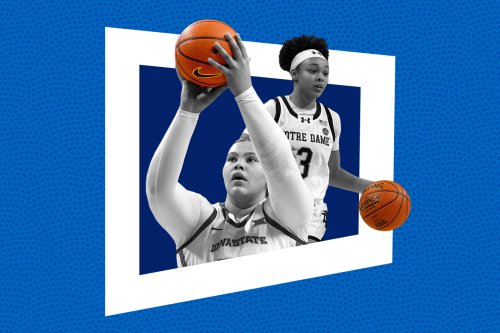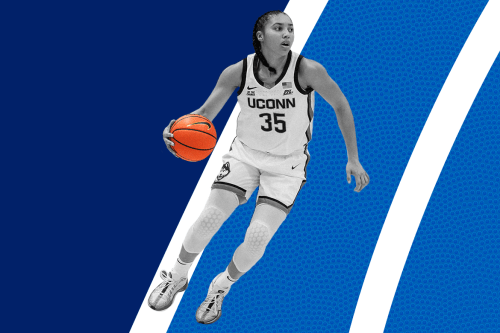Our editors independently select these products. Making a purchase through our links may earn Well+Good a commission
Allysa Seely is no stranger to defying the norm. The Team USA paratriathlete faced three challenging diagnoses while a student at Arizona State University: Chiari Malformation, basilar invagination, and Ehlers-Danlos Syndrome. As a result, she underwent brain and spine surgery as well as a below-the-knee leg amputation on one of her legs. To this day, she lives with complex chronic illness and multiple secondary diagnoses.
And while those dynamic diagnoses could derail anyone’s dreams, Seely was determined to hold on to hers.
“I had started triathlon prior to experiencing a major turn in my symptoms while at college. I had really just gotten started in the sport when I began losing sensation in my arms and legs and was struggling to walk,” Seely said in an interview with Well+Good from her pre-Paralympics training camp in Vichy, France. “My medical team at the time even said I would never be an athlete again. But, I don’t like to be told what to do, and I turned my purpose back to wanting to be able to run and do triathlon again. Never did I imagine where that desire would take me as I laid in a hospital bed all those years ago.”
“My medical team at the time said I would never be an athlete again. But, I don’t like to be told what to do.”
Fast-forward more than a decade, and 35-year-old Seely has done more than “just” run and participate in triathlon again. She is a two-time back-to-back Paralympic gold medalist in paratriathlon, the only Team USA paratriathlete to achieve such a feat. She won her first gold at the 2016 Paralympics in Rio de Janeiro, Brazil.
Now, Seely is preparing for the biggest race of her season as she prepares to go for gold again at the Paris Paralympics. She says she is excited, but also fairly calm, about the prospect of defending her title.
“I feel a surreal mix of emotions about where I am in my life—some days I feel like I am living in a movie,” Seely says. “On many days, I can’t believe that I’ve accomplished all of the things that I have, and that I’ve made history. I truly do focus on each day without getting caught up in the bigger picture … There is a piece of me that knows I’ve been here before and can handle it.”
Seely notes that her journey began with the goal of taking a single step while getting used to her prosthetic leg. The single step progressed to running a lap around the track, which progressed to larger goals like completing a triathlon, and, eventually, making the Team USA Paralympic paratriathlon roster.
“I hope other people can take from my journey that by focusing on yourself and your process, you too can find success,” Seely says. “Comparing yourself to [others] will do you no good. You must follow your pathway—we all have to take our own journey.”
On her journey, Seely has a few key habits and products that keep her resilient and healthy so she can compete at her best when it matters (like at the Paris Paralympics).
1. She knows she’s more than the Paralympics
As important as the Paralympics are to Seely, she remains grounded in her approach to being an elite athlete.
“I absolutely agree with the concept of separating our identities from what we ‘do,’” Seely says. “Whether you’re a Paralympic champion or a teacher or a doctor, you cannot let your work or your job define you.”
Seely says that when she is asked the question, “What do you do?” she will rarely say she is a Paralympic gold medalist.
“I always answer very vaguely, like ‘I work for the U.S. Olympics and Paralympics,’” Seely says. “The reason I do this is because once I tell people I am a Paralympian, I often end up in a never-ending conversation about it, and the reality is, there is so much more to me than paratriathlon.”
In addition to being a Paralympic champion, Seely says she is particularly proud of being an advocate for equal rights (especially for women and those with disabilities), a doting dog-owner, and an involved aunt to her young niece.
“I’m not just an athlete. My support group reminds me that even on the best days or the worst days, there is so much more to me than a gold medal,” Seely says.
2. She makes community a priority
After so many years as a top athlete, Seely knows that the key to longevity in sport is to find (and keep!) the fun in it.
“I never take my paratriathlon training so seriously to where I can’t pivot or rearrange the training to work for me and my life,” Seely notes. “If my friends are all going on a run together, I’ll change up my training so that I can join them; being part of a group and a community is important to me, especially given how isolated triathlon training can be.”
Seely says she’s learned over the years that she will benefit more from catching up with friends on a casual run or ride than if she regularly forces herself to skip time with friends in the name of ticking off a training session.
“After I see my friends for a run or ride, I’m recharged mentally and I’m ready to take on workouts later in the week,” Seely says. “Sometimes it’s just about getting the miles in without being too specific about pace or distance.”
3. She stays in the moment
Seely credits much of her success in sport to taking her journey day by day, goal by goal. Outside of sport, Seely likes activities that help her stay present.
“Getting out with my two dogs, Bentley and Mowgli, for a walk is incredibly rejuvenating. I love getting to see the joy they find in the littlest of things as we walk around the neighborhood,” Seely says. “My dogs are honestly the thing I miss most about home when I travel.”
Seely says her other go-to activities are crocheting and baking, which she jokes may seem like “grandma activities,” but that she finds a lot of comfort in them.
“These hobbies are fairly sedentary, which also gives me time to recover from my training,” Seely says. “And as someone who is not very good at sitting still, having engaging activities that force me to finally be still is incredible.”
4. She mixes things up
When Seely is in the thick of her paratriathlon season, one of her top priorities is staying injury-free, which often means saying “no” to things like trail running or mountain biking.
But when the season is done, all bets are off, and Seely adores taking her Liv mountain bike for a spin.
“My coach and I have an agreement: When the season starts to when the season ends, I stay off my mountain bike,” Seely says with a laugh. “But as we get closer to the end of the season, I literally count down the days to when I can hop on my mountain bike.”
Seely says that taking a break from road biking is rewarding at the end of a long competitive season.
“I loved playing in the dirt as a kid, and now I channel that through mountain biking,” Seely says. “I love being out in nature, enjoying the silence and solitude of it while on my mountain bike.”
5. She practices self-care
Seely is constantly putting her body through rigorous workouts. While she thrives on being an elite athlete, she finds joy in gentle self-care, too.
“This past year I have started to enjoy some simple skincare practices,” Seely says. “Something as easy as a Burt’s Bees facial mask brings me a lot of relaxation.”
Seely says that it’s not often she gets to truly pamper herself or fully relax, so incorporating small and easy acts of self care make her feel “fresh and recovered” before her next training session.
Sign Up for Our Daily Newsletter
Get all the latest in wellness, trends, food, fitness, beauty, and more delivered right to your inbox.
Got it, you've been added to our email list.
